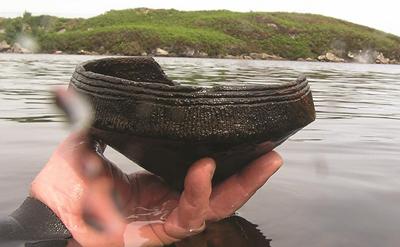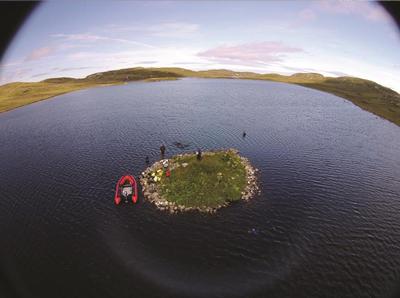True age of mysterious Scottish ‘artificial islands’ revealed

Archaeologists from the University of Southampton, working with colleagues at the University of Reading and local archaeologist Chris Murray, have discovered that some Scottish ‘crannogs’ date to the Neolithic period – far earlier than previously assumed.
These artificial islands, constructed in lakes and sea inlets, have, until now, thought to have been built, used, and re-used over 2,500 years between the Iron Age and the post-medieval period.
However, researchers have now conclusively radiocarbon dated four crannog sites in the Outer Hebrides to c.3640–3360 BC – shifting the timeline by thousands of years. Their findings are published in the journal Antiquity.
In 2012, extraordinarily well-preserved Early/Middle Neolithic pots were discovered on a loch bed by Lewis resident Chris Murray. Later, working with Mark Elliot from Museum nan Eilean, he recovered similar collections in five more crannog sites across the Island.
These pottery finds suggested the crannogs could date to the Neolithic period and led the researchers to investigate using a combination of ground and underwater survey, photogrammetry, palaeoenvironmental coring and excavation. They concluded there was evidence of artificial islet construction in the Outer Hebrides during the Neolithic.

Archaeologist at the University of Southampton, Professor Fraser Sturt, comments: “These crannogs represent a monumental effort made thousands of years ago to build mini-islands by piling up many tons of rocks on the loch bed.”
Substantial quantities of Neolithic ceramic vessels were recovered from the lochs and their large fragmental sizes suggest that at least some, and possibly all, were complete when they entered the water. In other words, there was a systematic and possibly ritualised deposition from the islets.
Although the Outer Hebrides have a significant number of crannogs, they are also common across the rest of Scotland and Ireland. Just 10 per cent have been radiocarbon dated and only 20 per cent in total have been dated at all.
Professor Sturt concludes: “It appears most probable that many more Neolithic crannogs will be found. Our research shows this is a new type of site for the British Neolithic, indicating different forms of prehistoric practice. It is very exciting to think about the potential that these sites hold for improving our understanding of the past.”
